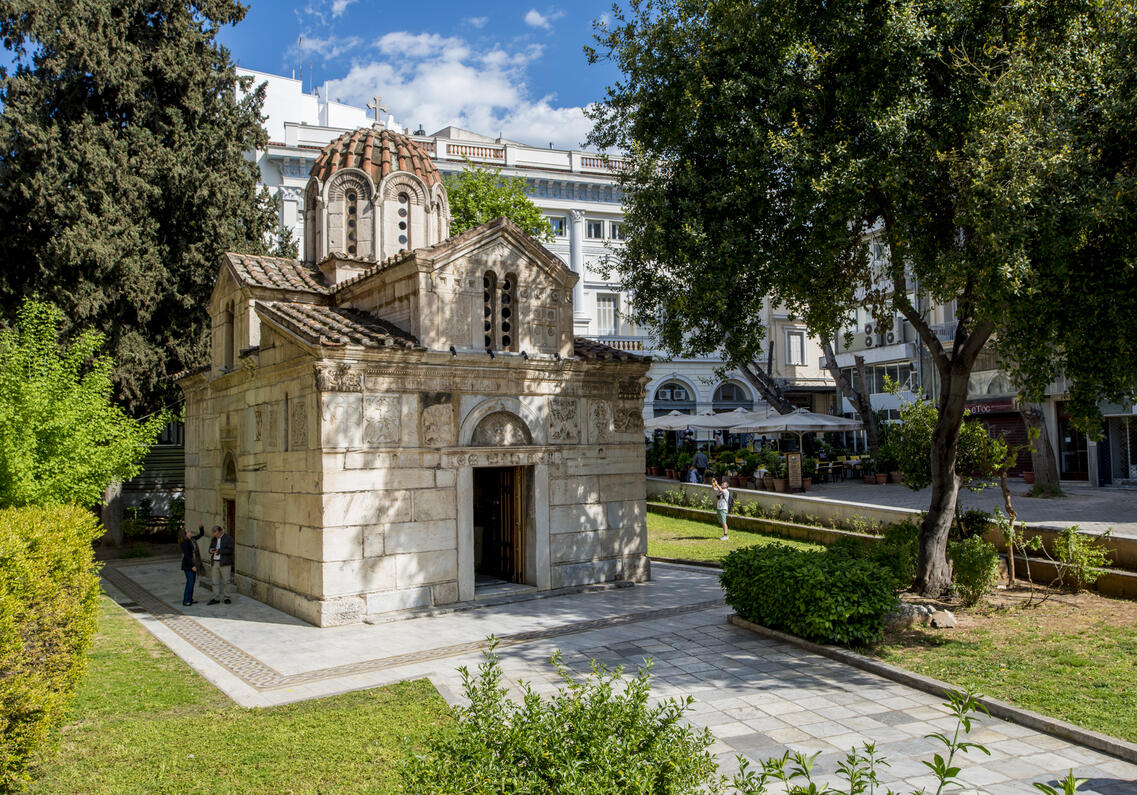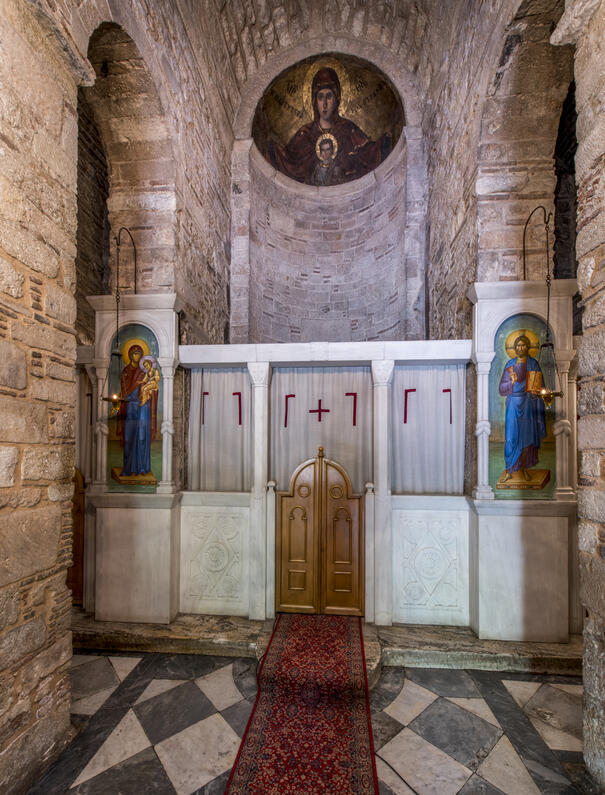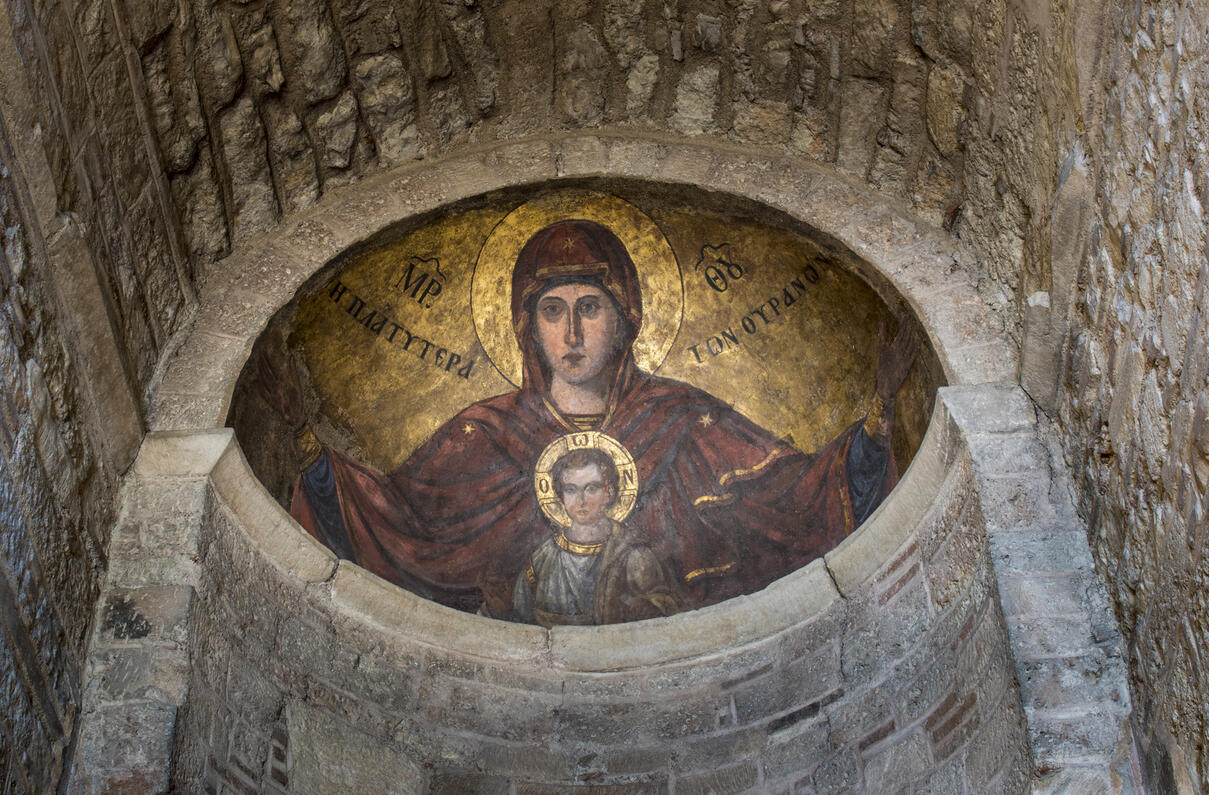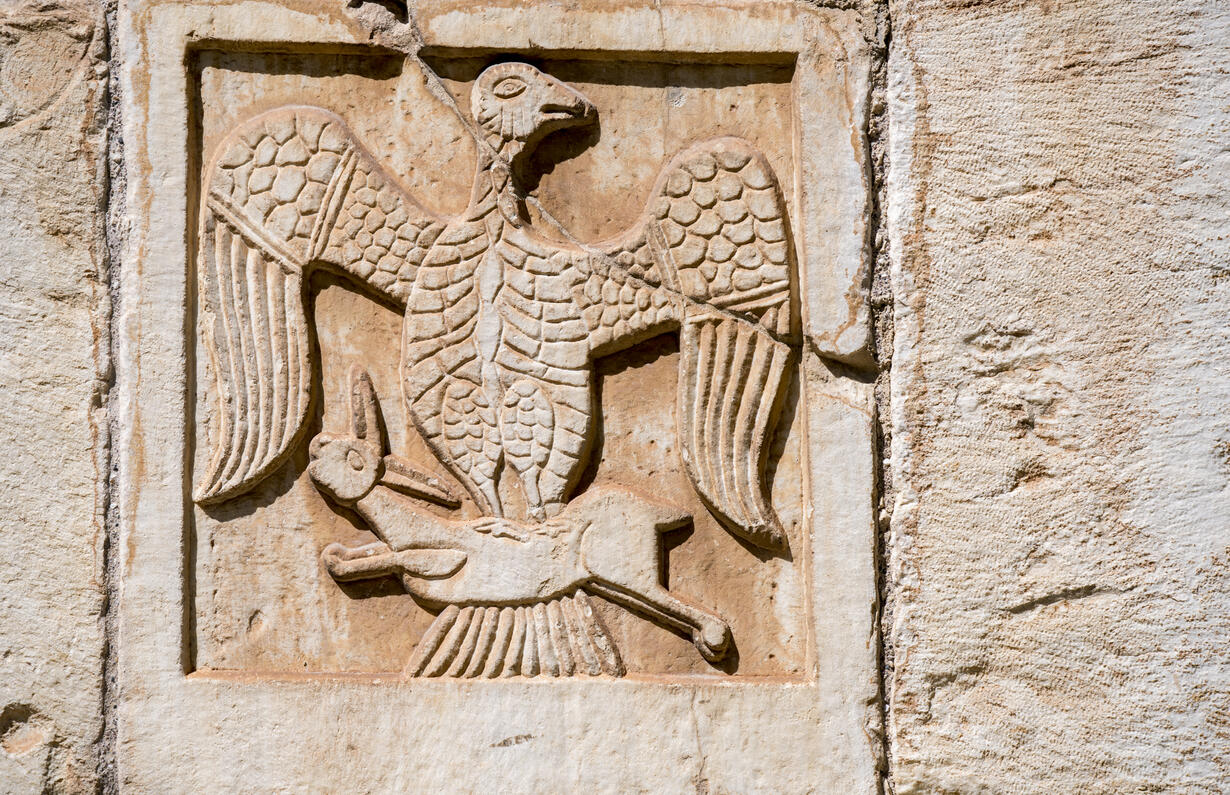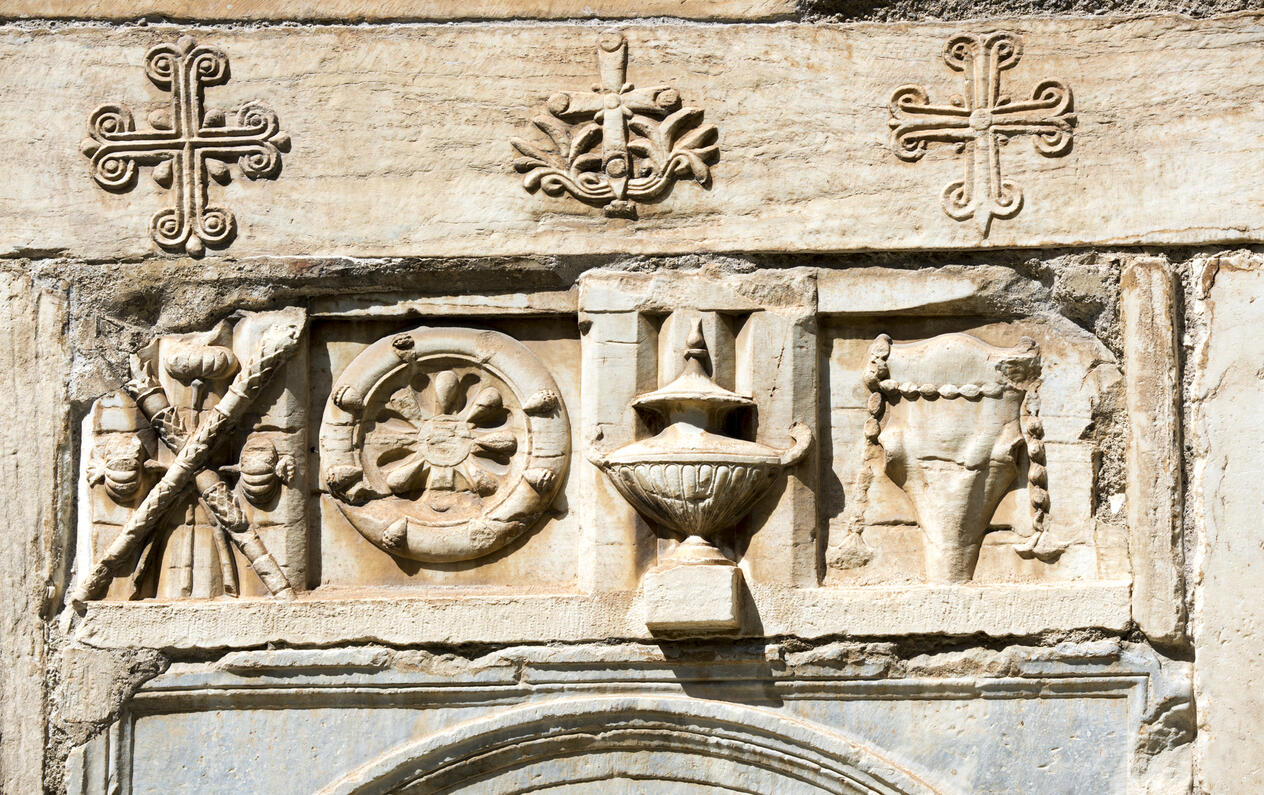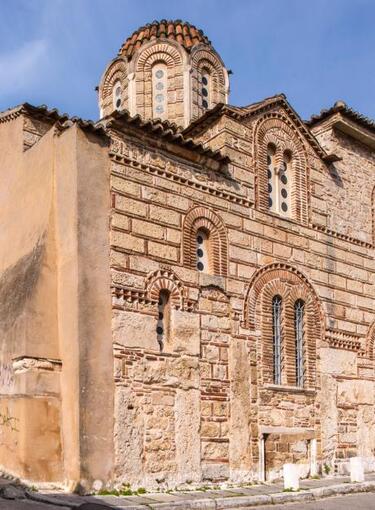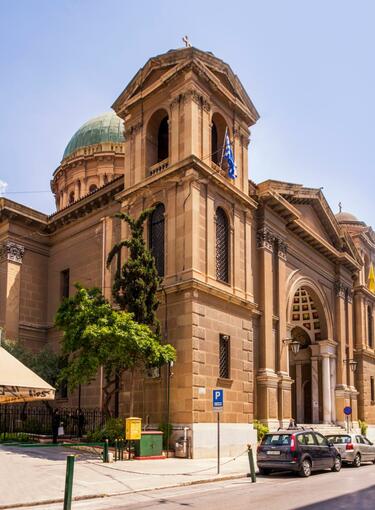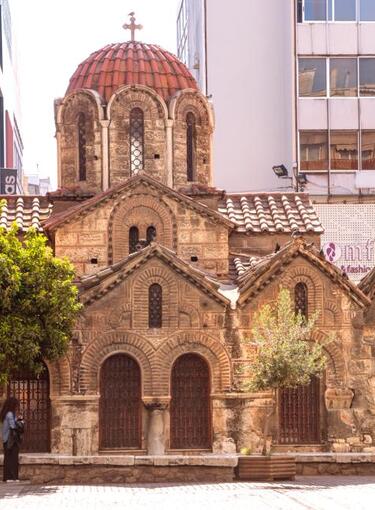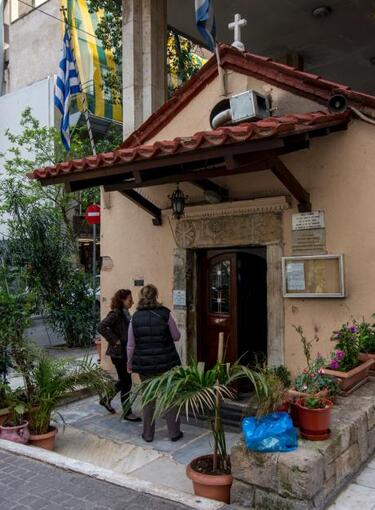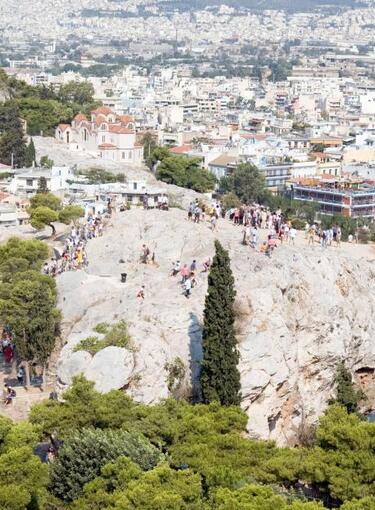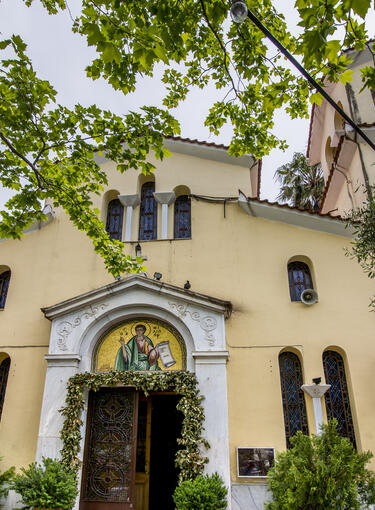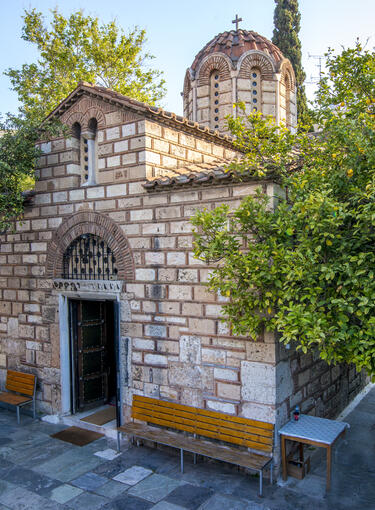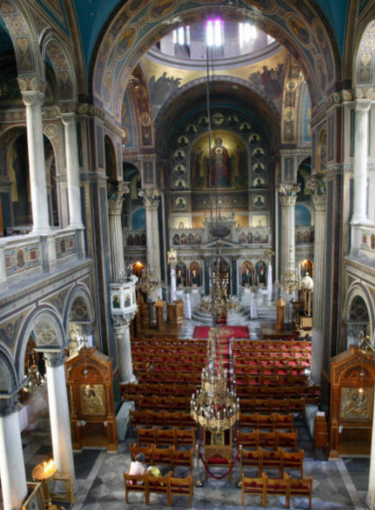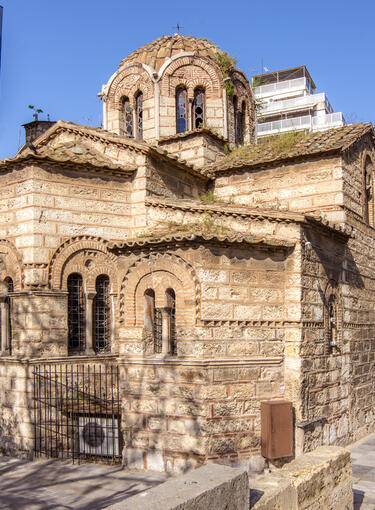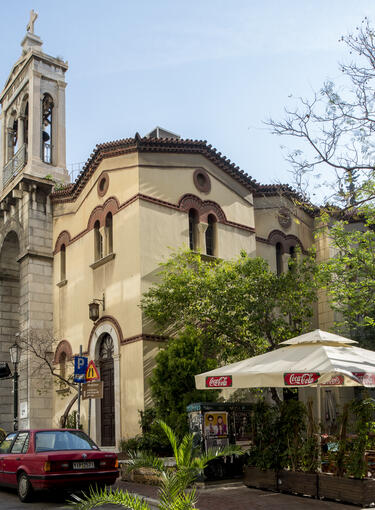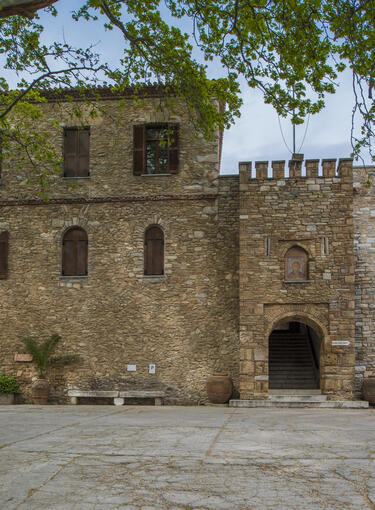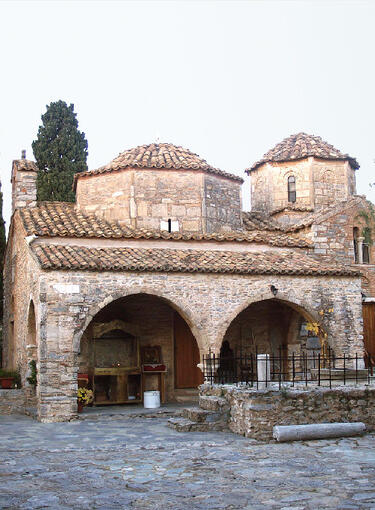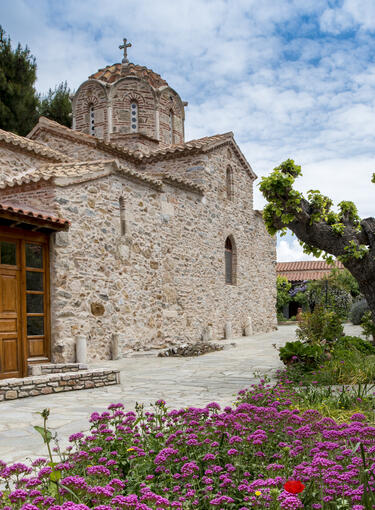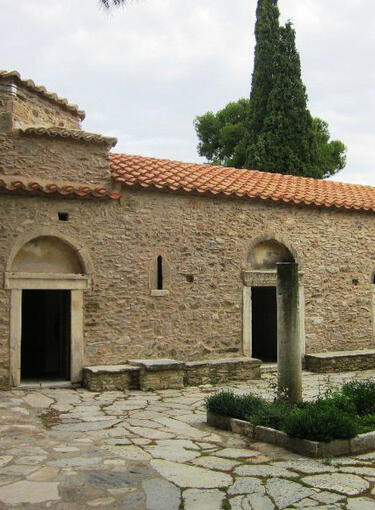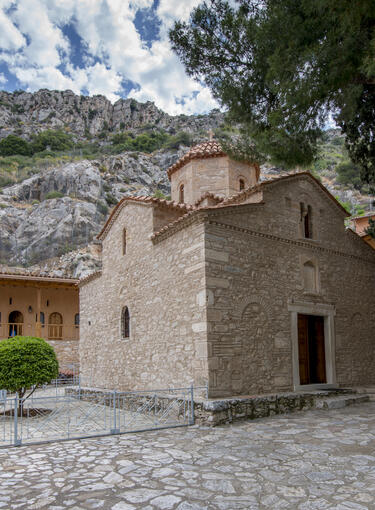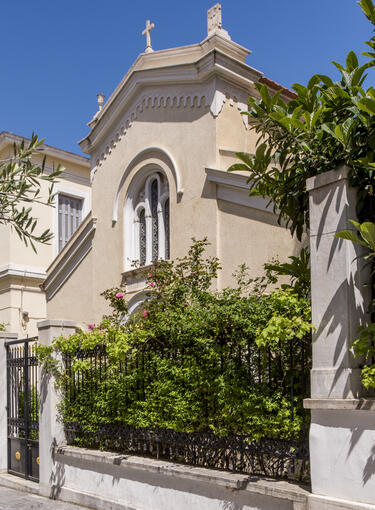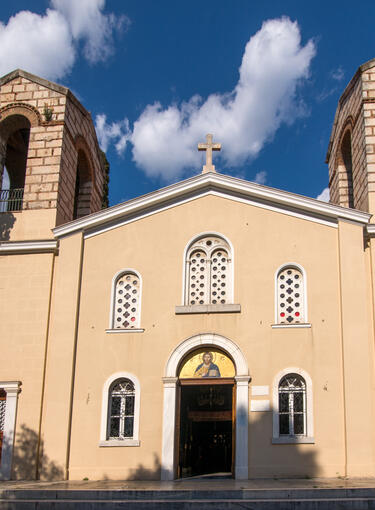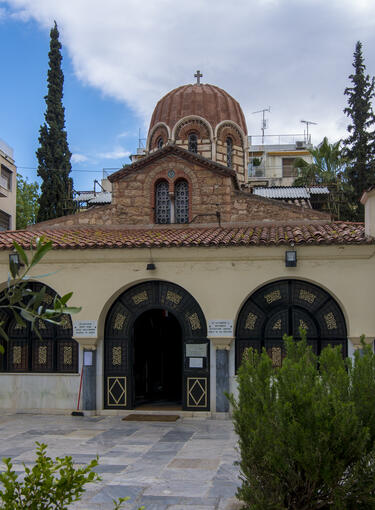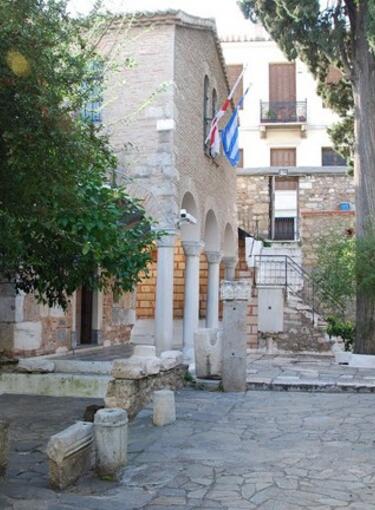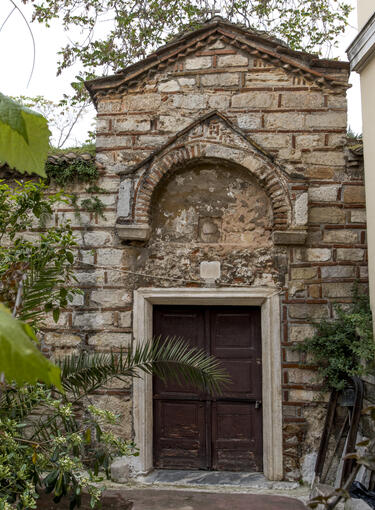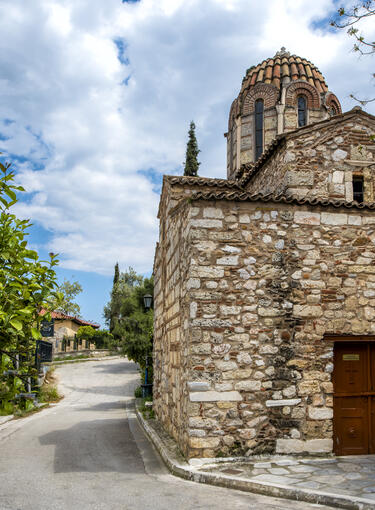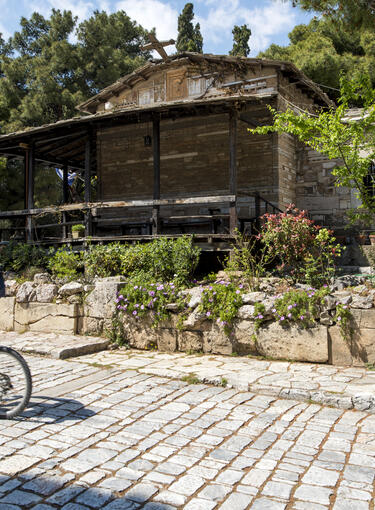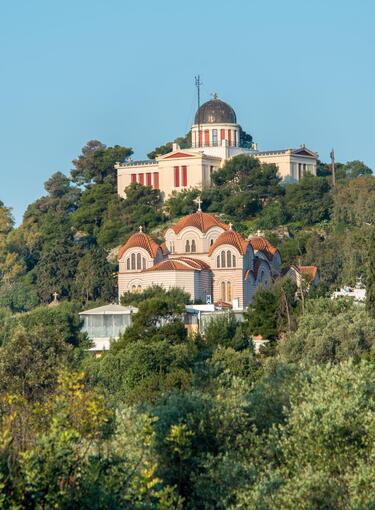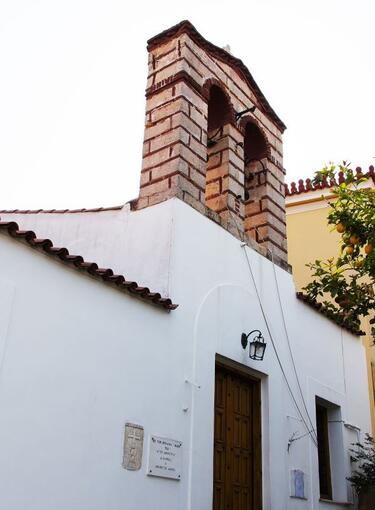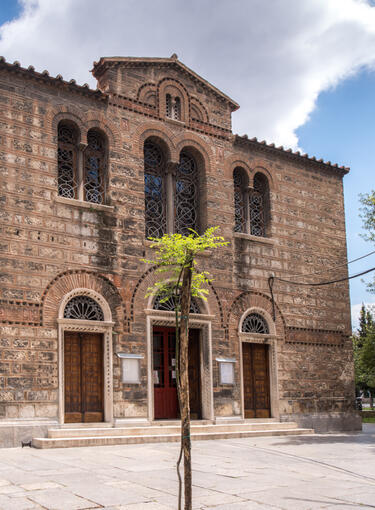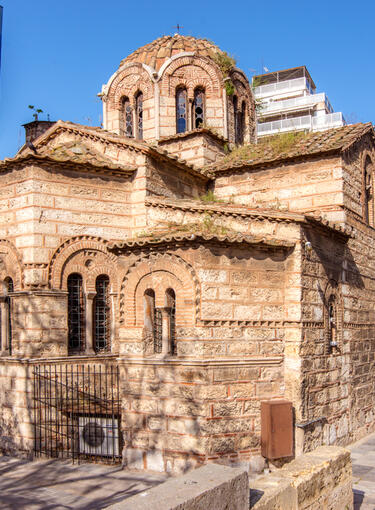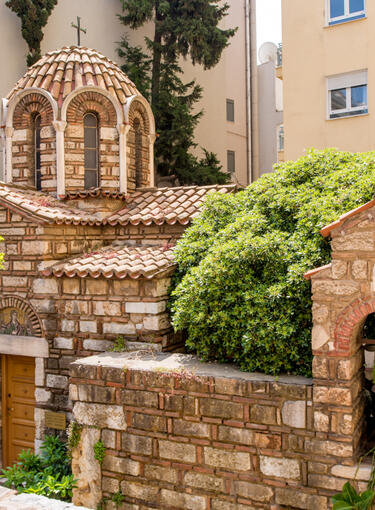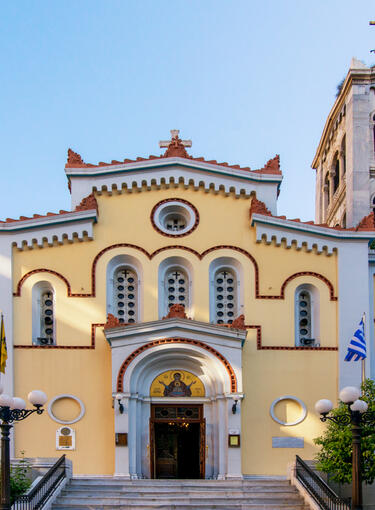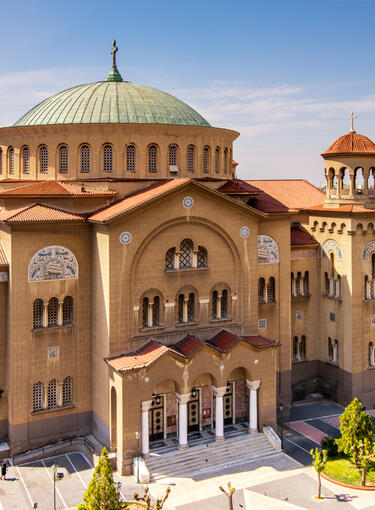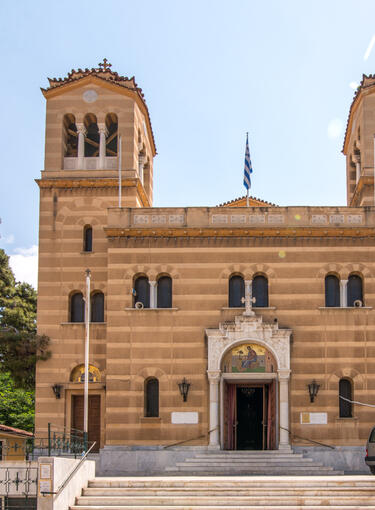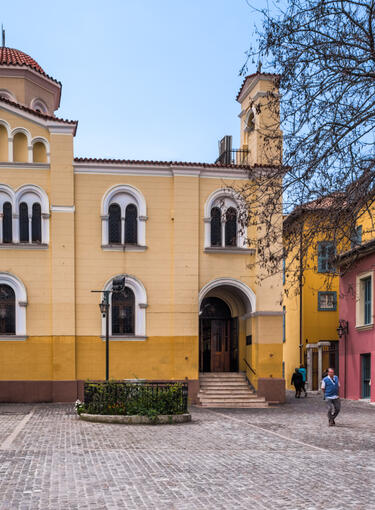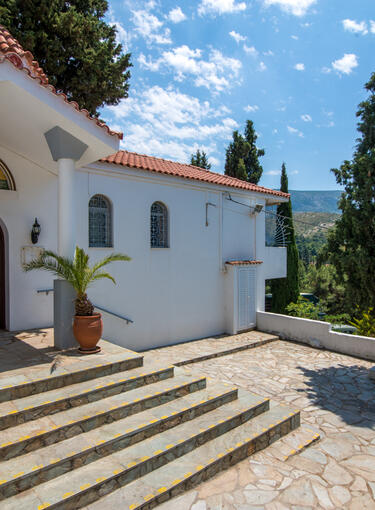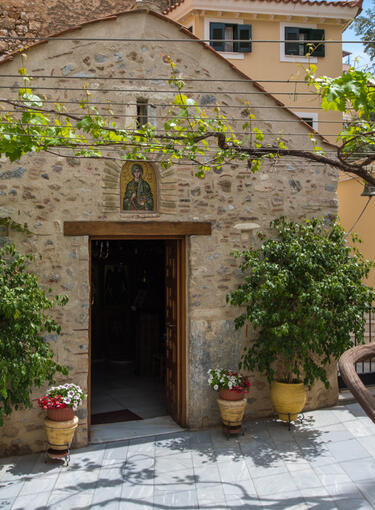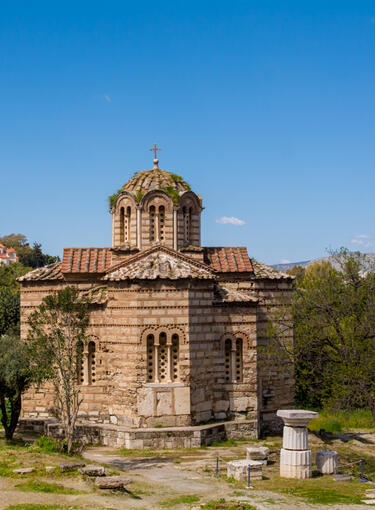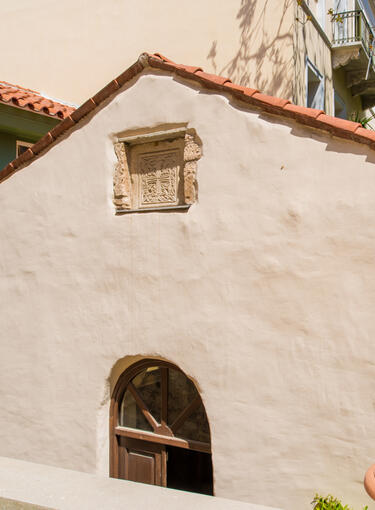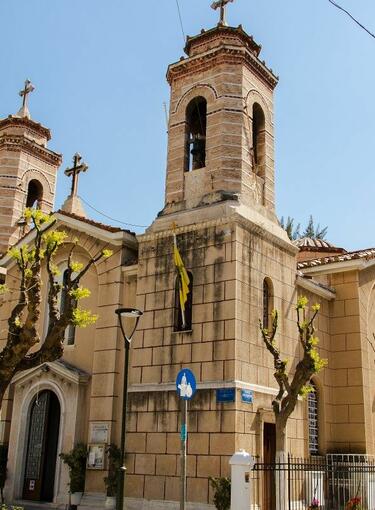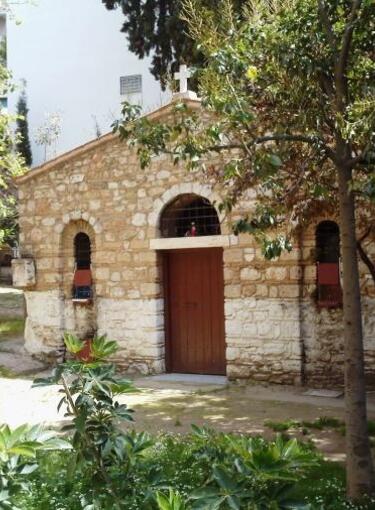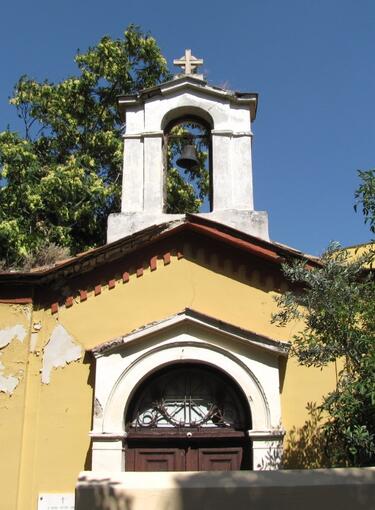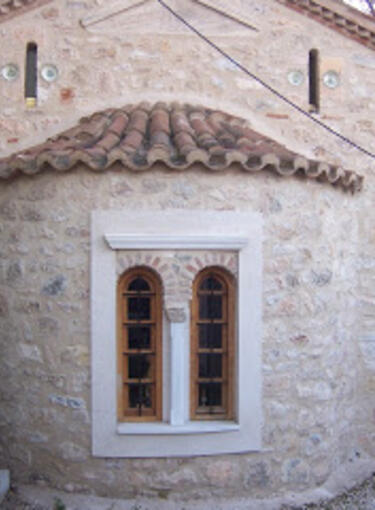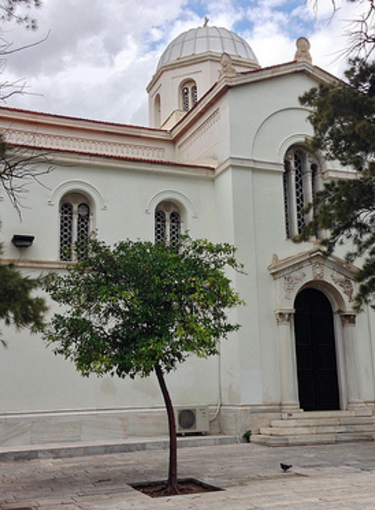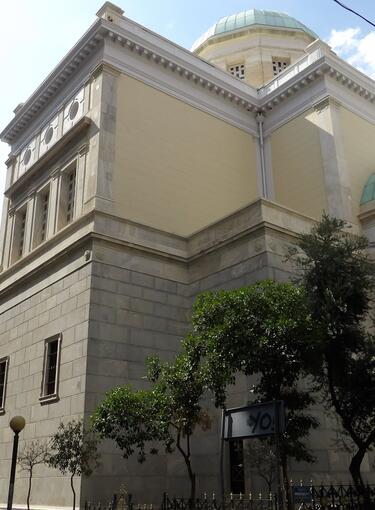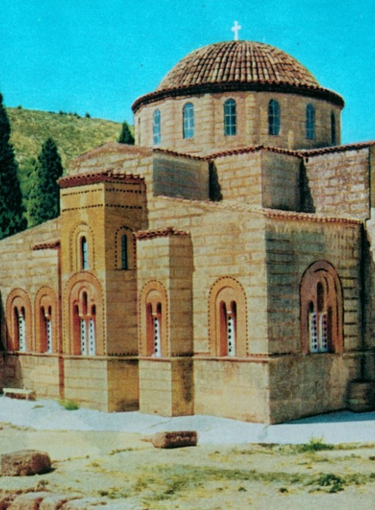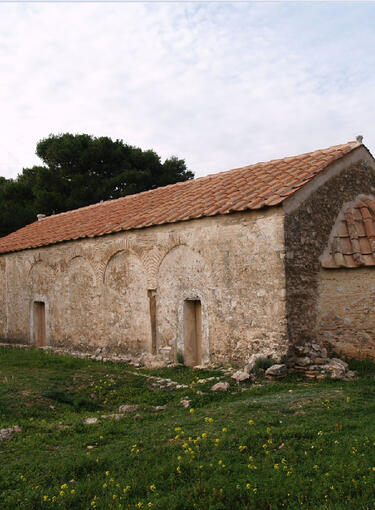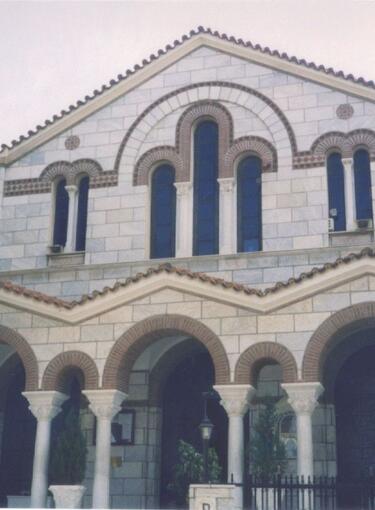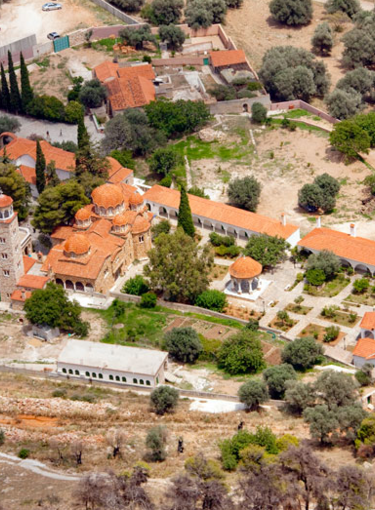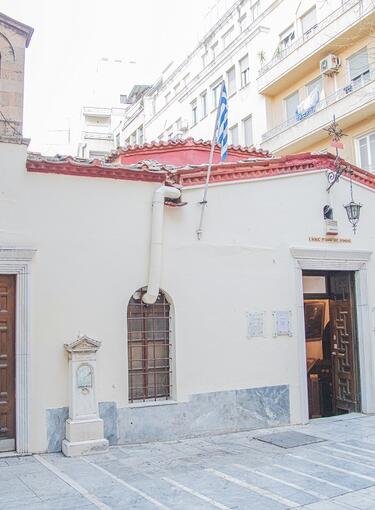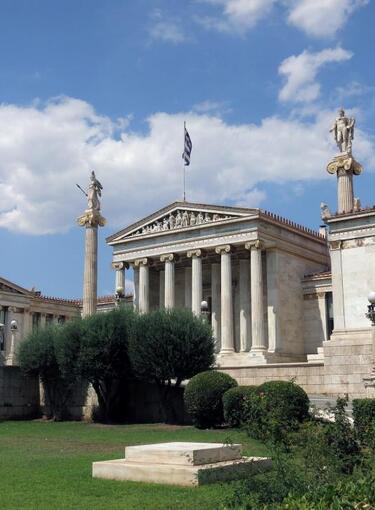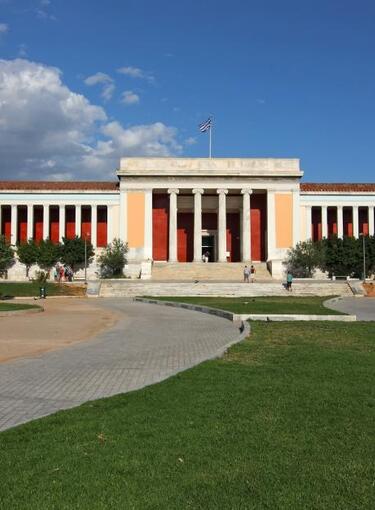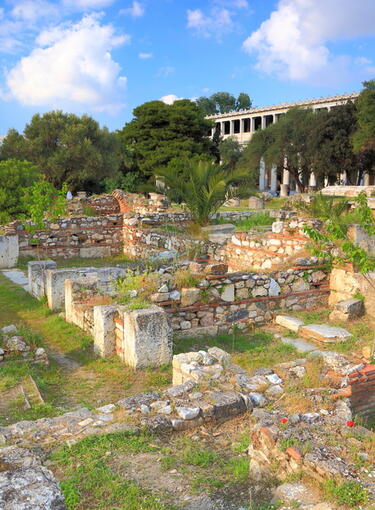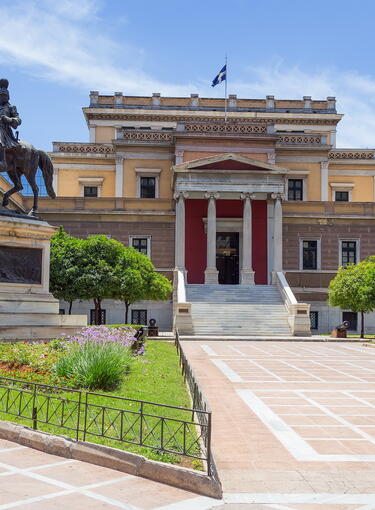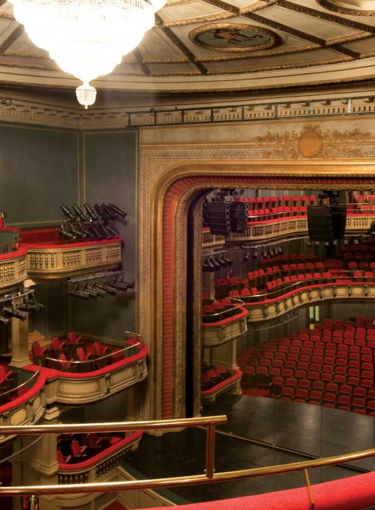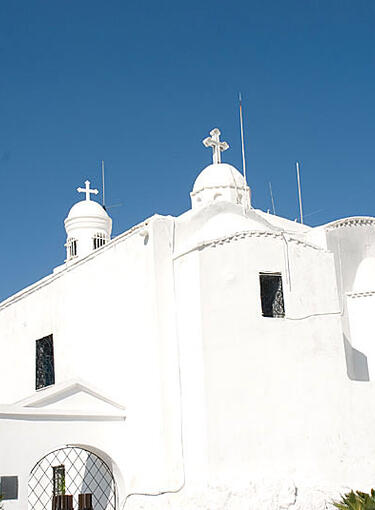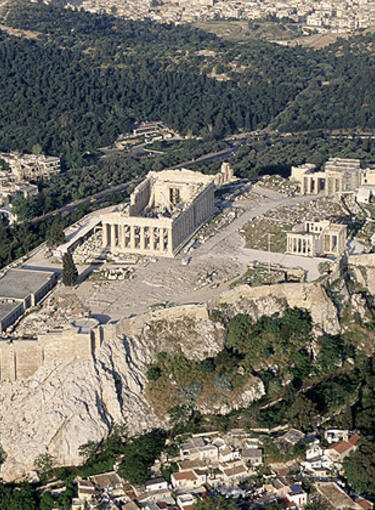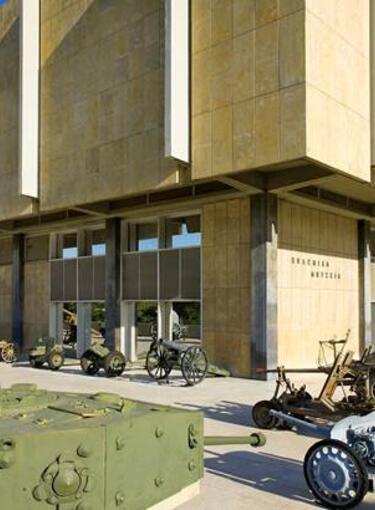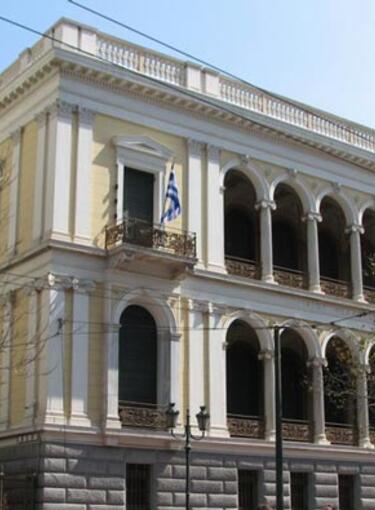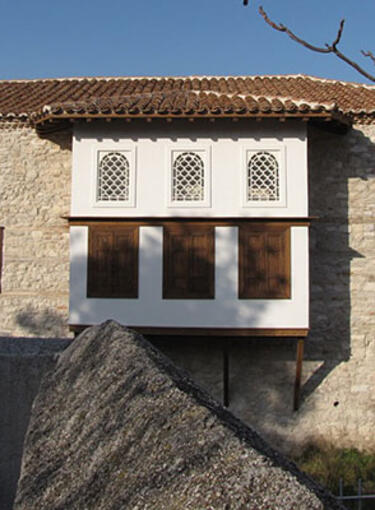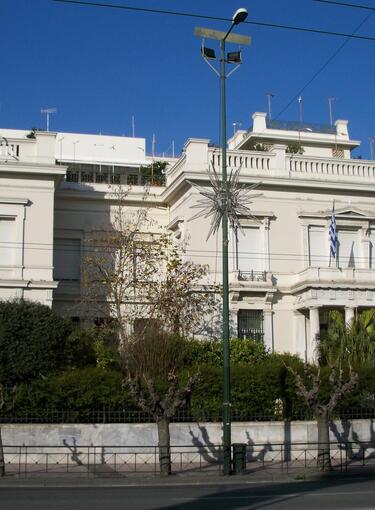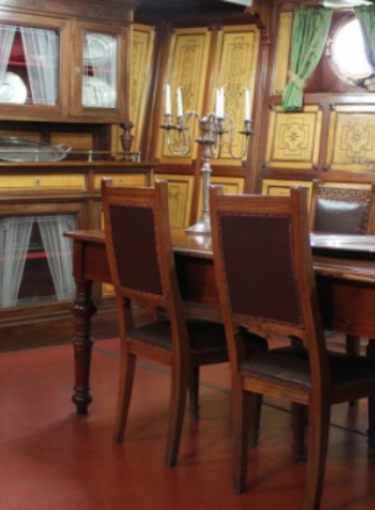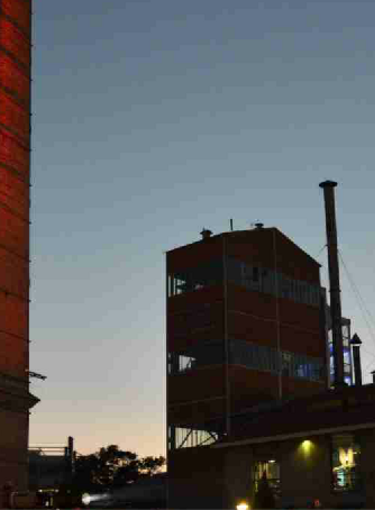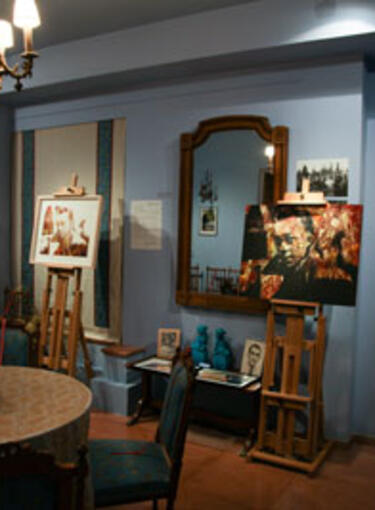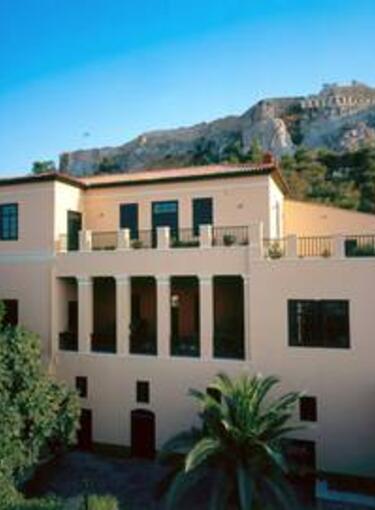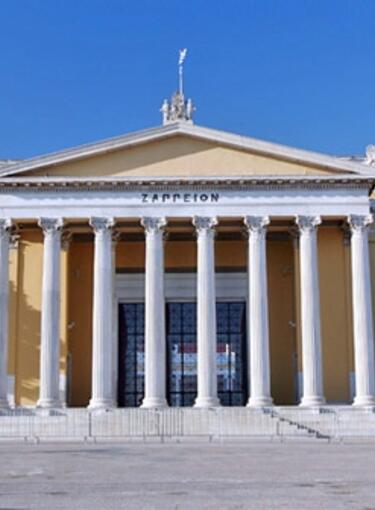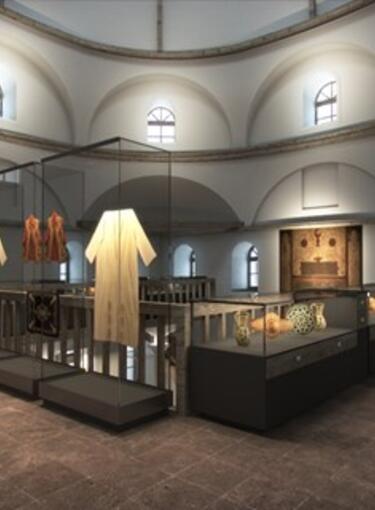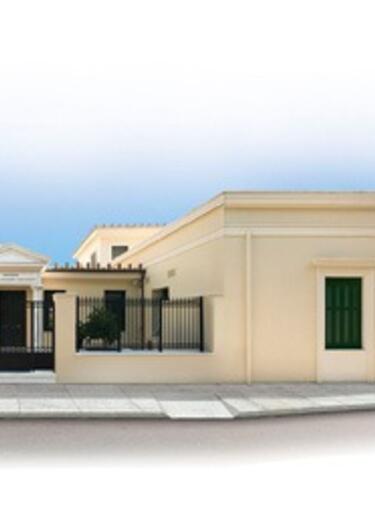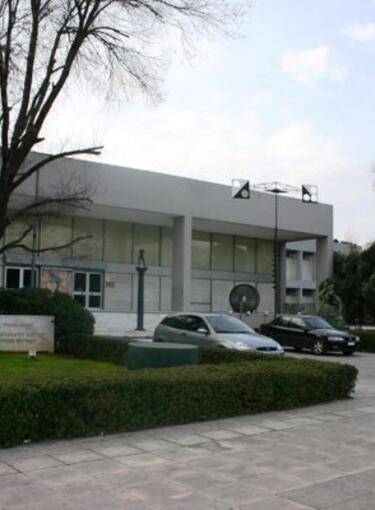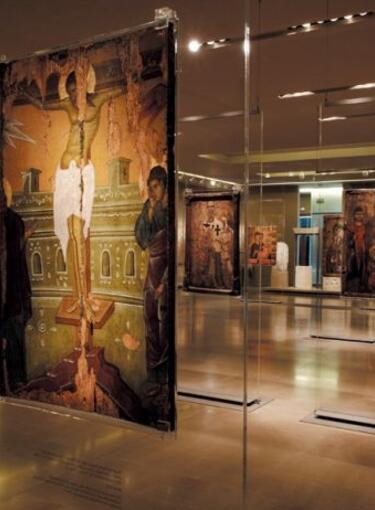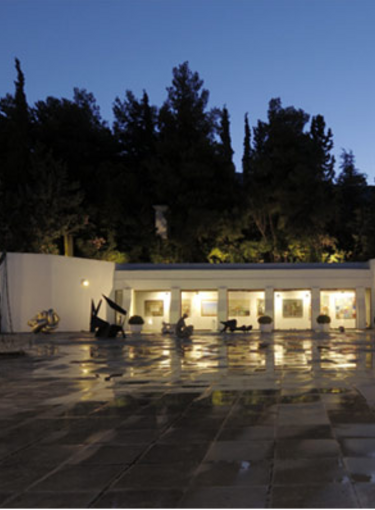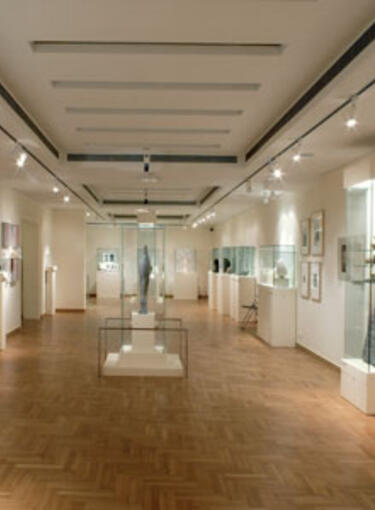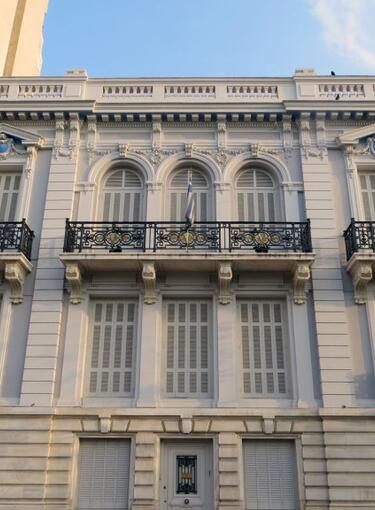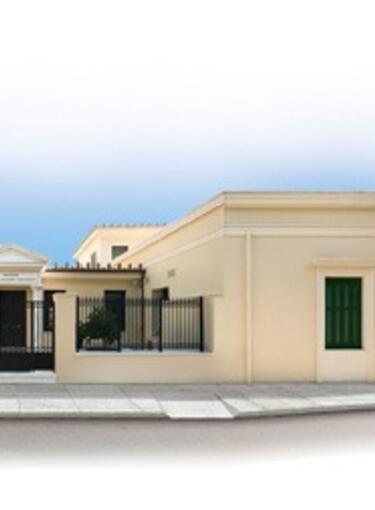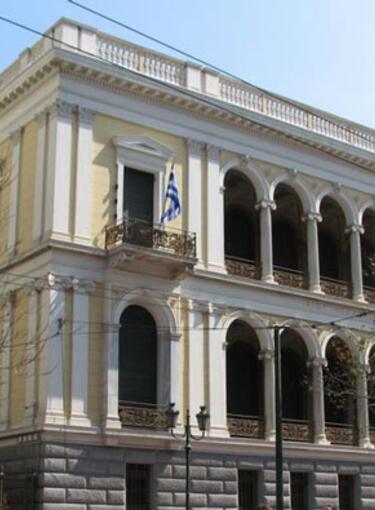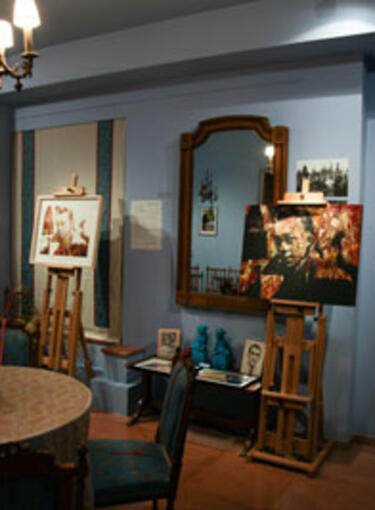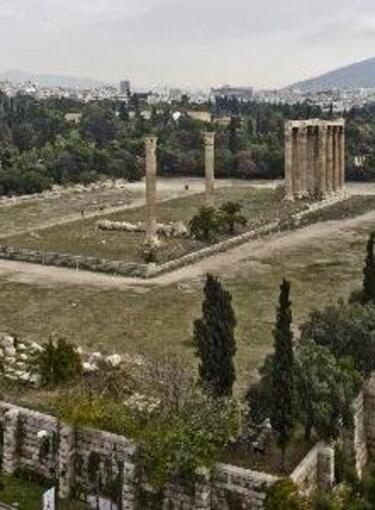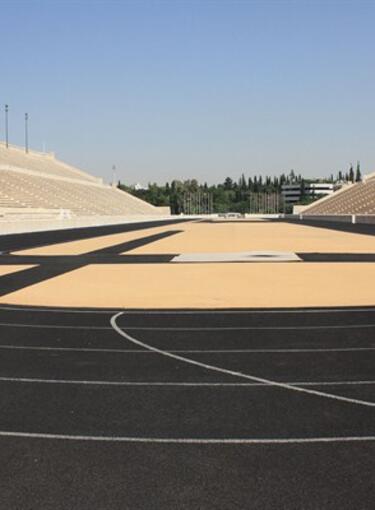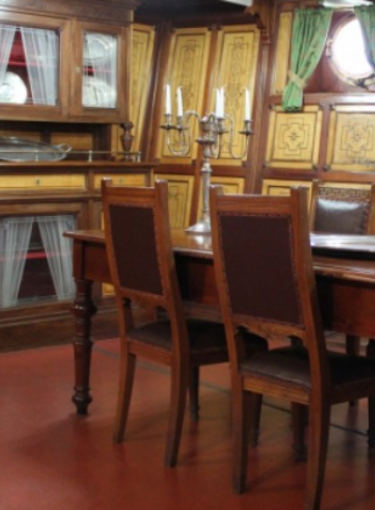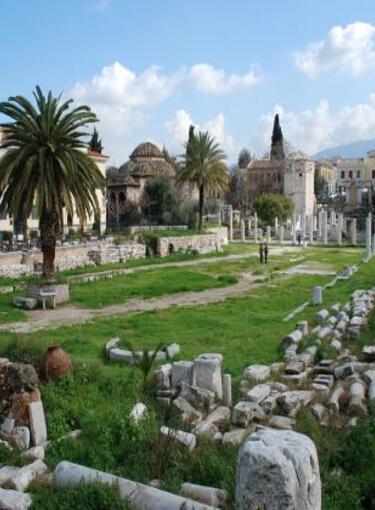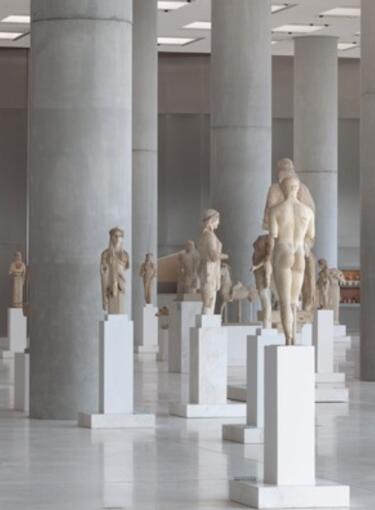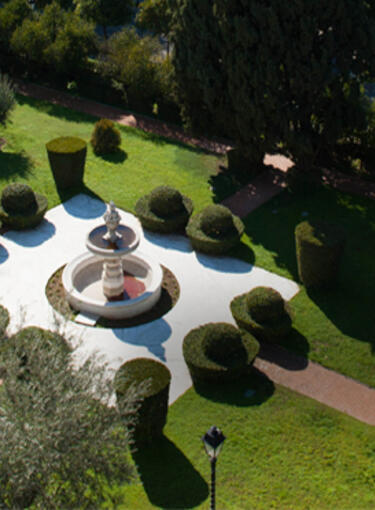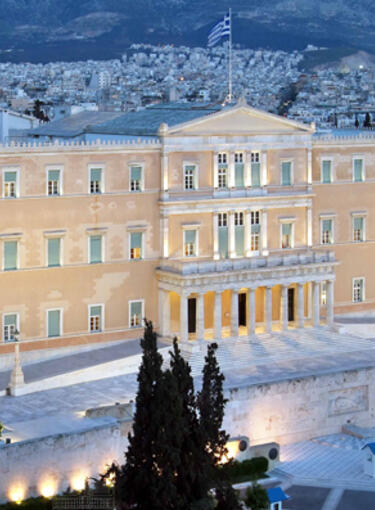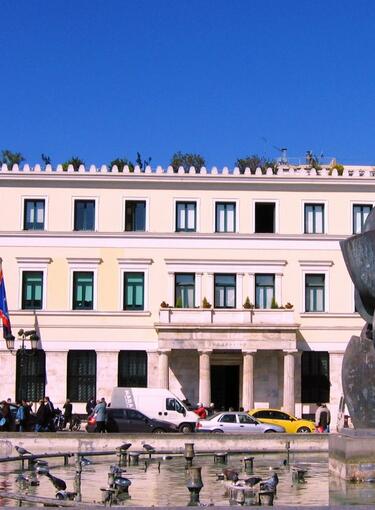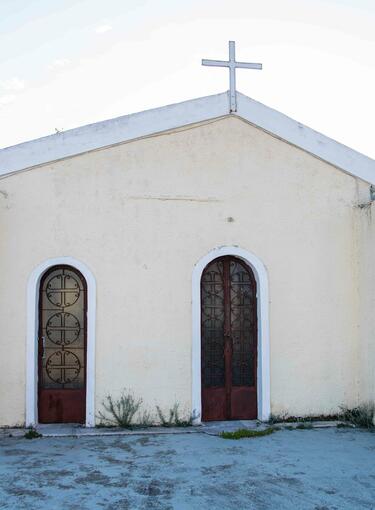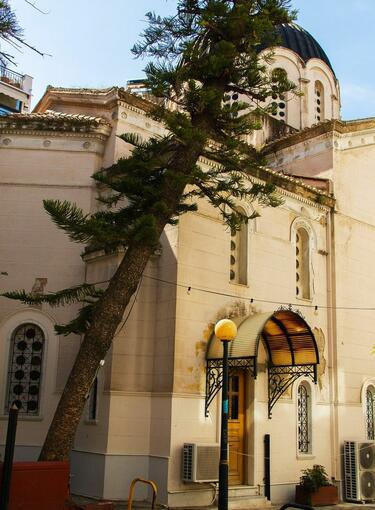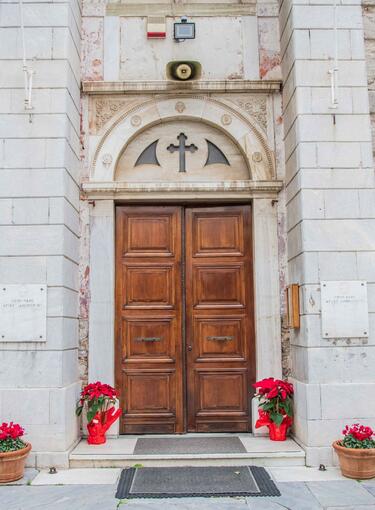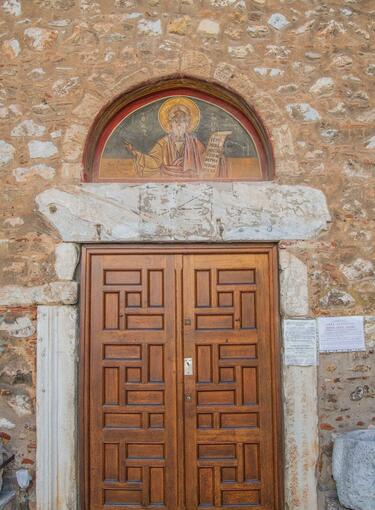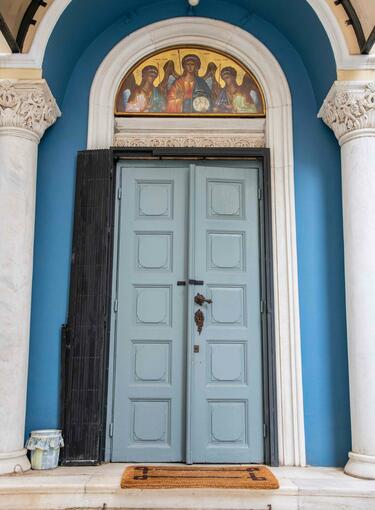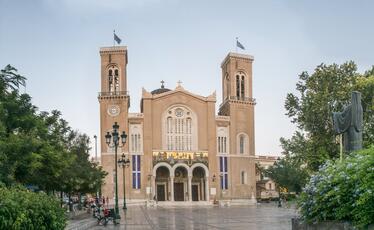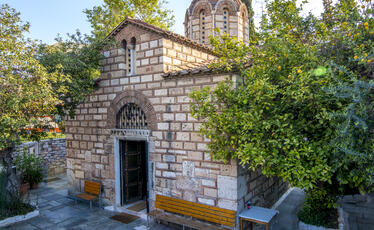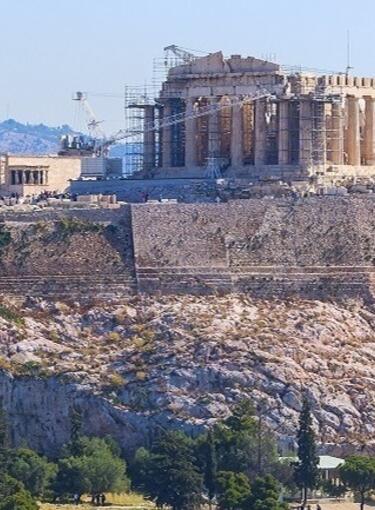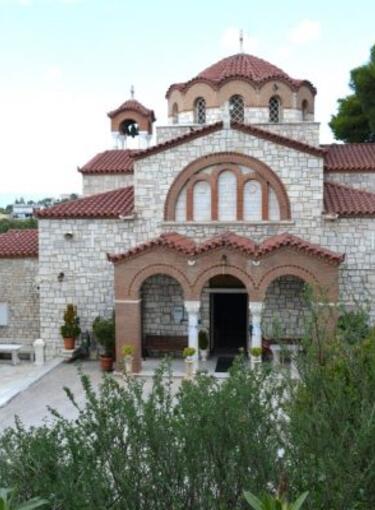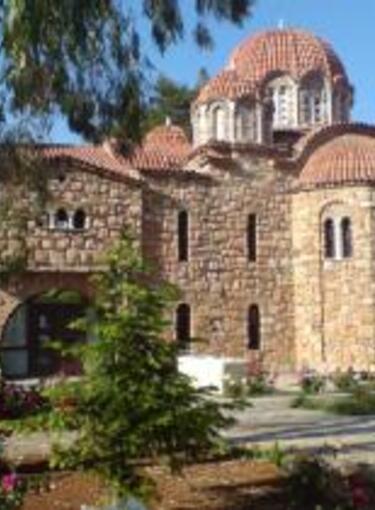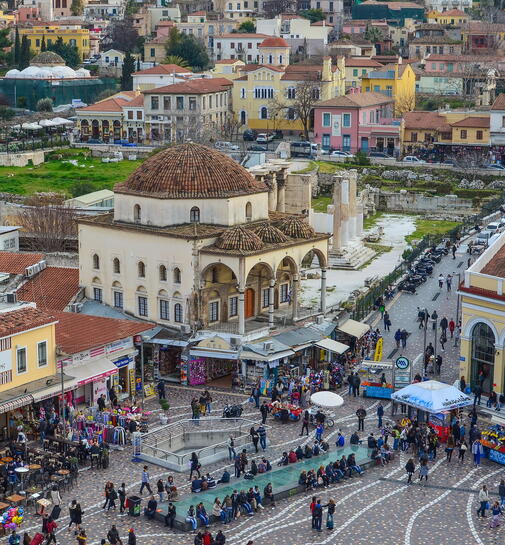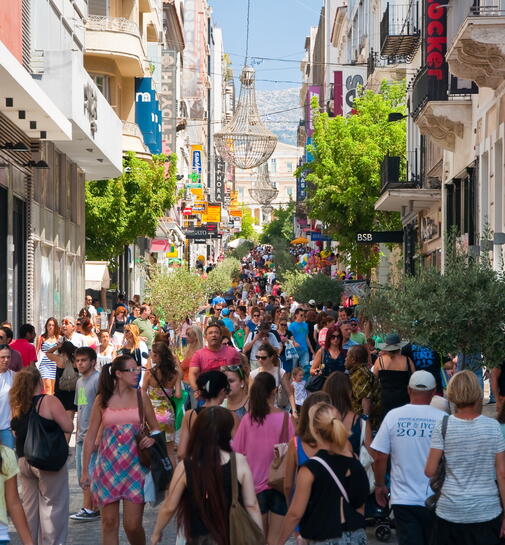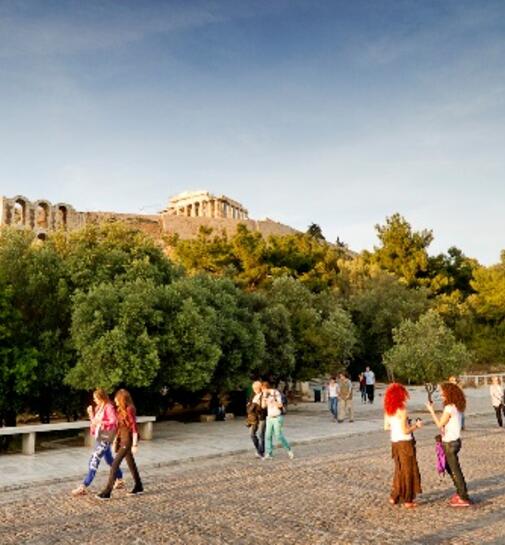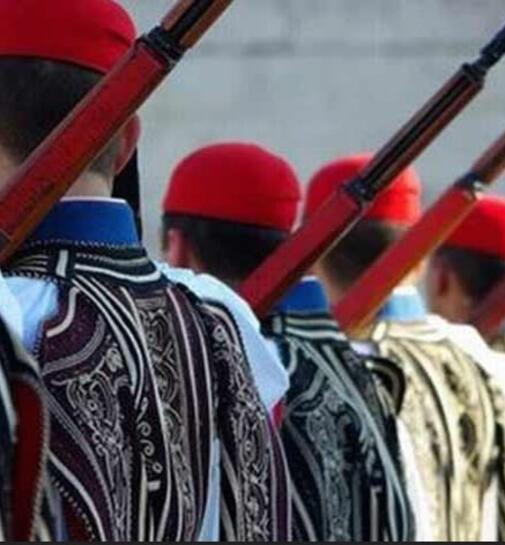Historic Temples
In the heart of the historical centre of Athens, right next to the metropolitan church, at Metropolis square, is the elegant, small church of Panagia Gorgoepikoos (she who is quick to hear), known as the church of Agios Eleftherios or the Mikri Metropoli (small cathedral).
It is built over an ancient temple dedicated to the goddess Eileithyia, who during antiquity was the protector of pregnant women, like Agios Eleftherios in Christianity. It dates from the end of the 12th century and its construction mimics elements from the ancient sanctuary, while abundant ancient construction material has been used to its walls. These elements relate the monument to the scholar and Metropolitan of Athens Michael Acominatus Choniates (1180-1204), who had excellent Classical education. It is possible that the church was initially the catholicon of a small monastery, which in the middle of the 17th century it became the metochi of the Monastery of Kaisariani. During the period of the Turkish occupation (1456-1833) it was part of the metropolitan mansion of Athens and was used as the chapel of the metropolitan. In 1834 it was used for the storage of antiquities and sometime later, in 1839, its initial columns, which were destroyed by a fire, were replaced with built pillars and the bell tower that was located on the western side was demolished. In 1841 it was converted into a public library and in the period 1862-1863 they carried out new alterations, during which unfortunately they removed the Middle Byzantine wall paintings from its interior.
Architecturally, the church belongs to the type of the semi-complex, cross-in-square church with a dome. On the east there is an arch, with three sides on the exterior, and a tripartite narthex on the west.
The dome follows the well-known type of the octagonal “Athenian”, with marble columns on the corners and lobed windows; however it is not built according to the cloisonné system of masonry, but also with rectangular marbles of the same height.
Of particular interest is its masonry. The wall “step” on a podium on three sides, with the exception of the eastern side, and are constructed with marble undecorated courses. Approximately from the middle upwards they are cladded with around ninety ancient and byzantine reliefs. The ancient sculptures have been brought closer to Christianity with carves crosses and some of them have been placed in such a way so to resemble the frieze of an ancient temple. Among them more impressive are the sculptures over the southern entrance of the church with the symbols of the worship of Demeter in Eleusis, which may come from the propylon of the Eleusinio in Athens. Furthermore, important are the sculptures that create a frieze on the western side and have representations of an ancient calendar. The Christian sculptures with representations of animals facing or devouring each other, resembling the art of the east, come possible from Byzantine secular buildings.
The church celebrates on the 15th December.
Church of Virgin Mary Gorgoepikoos (Saint Eleftherios)
On Mitropoleos square, to the southern side of the Orthodox Cathedral church of Athens, one finds an open–air museum of ancient sculpture, the holy church of Virgin Mary Gorgoepikoos or otherwise Saint Eleftherios, also known as the Small Metropolis of Athens.
Originally, the church was dedicated to Theotokos, Virgin Mary Gorgoepikoos (or Gorgopikos according to then Athenian vernacular) which promptly listens to the prayers and hurries to the pleas of the devotees. From the 18th century until the Greek revolution, the church became a house of worship of the Metropolitan house which existed there in the vicinity, and for this reason and ever since it is called also the Small Metropolis.
In 1861, following a proposal by Queen Amalia, it was named ‘Saint Sozon’, for the sake of the salvation of the Queen and King Otto from an assassination attempt in the evening of the 6th of September, namely on the very day of the panegyric vesper of Saint Sozon. In 1862, the church was dedicated to Saint Eleftherios on the occasion of the eviction of King Otto and the end of Bavarian rule in Greece. Following the erection of the Metropolitan church of Athens, Saint Eleftherios served as a chapel.
Tradition reports that the church was built on the ruins of an ancient temple which protected pregnant women and was dedicated to the goddess of childbirth Eileithyia, as, after all, also Saint Eleftherios is regarded as patron of expectant mothers in the Orthodox Christian tradition.
According to certain researchers, the construction of the church is related to Michail Choniatis (1138-1204), a Byzantine scholar, admirer of classical education, while according to others the church is either prior to Choniatis, namely of the 11th century, or subsequent, and is dated at around the end of the 12th century. The lack of written sources to a large degree renders its dating difficult. Irrespective, however, of the accurate time of the erection of the church, the only thing certain is that its owner utilized ancient building material. He aggregated whichever sculpts he could and immured them in the four sides of the church.
Architecturally, it belongs to the type of the semi-complex four-columned cross-in-square inscribed domed church. The eight-sided Athenian-style dome consists of single–light windows, marble colonnetes and is built with equal–height rectangular marbles. At the eastern side one can discern an apse, three-sided externally. Westerly, there is a tripartite narthex, whose central barrel-vaulted part is taller than the side parts.
In the church the cloisonné construction method is absent, as plinths have not been used anywhere. The entire edifice is built with large marble slabs while at its upper parts, from the height of the gates and windows and above, one can behold approximately ninety reliefs. The relief representations have been immured in an artful manner, forming a frieze transversing across all the sides of the building.
In the western façade of the church there has been integrated the sculpt of the Attic calendar. The architect of the church positioned it over the central entrance, at a narrow frieze. Owing to limited space, the relief representation was destroyed at some points, as it had to be cut. It is divided into twelve parts, equal to the number of the months of the lunar calendar. At the beginning of each part, each month is depicted in personification. In the middle one can observe scenes or persons related to the seasons, the feasts or agricultural pursuits and at the end there is to be discerned the zodiac sign corresponding to each month. For the consecration of the representation three crosses were added to the relief.
At the same side one can observe an archaic female figure to which have been added a relief cross, reliefs with birds (such as peacocks) and snakes, a relief with lions, capitals of the Hellenistic era, sphinxes and winged animals trampling on snakes and eating fruits of trees.
At the southern side of the church there stands out over the lintel, the relief with the procession of the Eleusinian Rites. Also, reliefs with cross ornaments are not absent, as also cornices some inscribed. Moreover, on a cornice it is possible to read the following inscription: ‘ΗΡΑΚΛΕΩΝ ΗΡΑΚΛΕΟΝΟΣ ΚΗΦΙΣΙΕΥΣ ΔΟΡΟΘΕΑΣ ΓΕΝΟΥΣ ΜΥΡΙΝΝΟΥΣ ΘΥΓΑΤΗΡ’ [Herakleon son of Herakleon from Kifisia, born by Dorothea, daughter from Myrinnous]. Of special interest are also the immured panels, in one of which appears an eagle catching a hare, a representation symbolizing the victory of the Christian devotee over his passions.
The eastern side, has been immured with a representation in which are depicted two archaic figures holding a tripod, with a panel in which a lion is devouring a deer, a panel with crosses and plant ornaments, a panel with an eagle, and a panel with a cross and peacocks.
Last, at the northern side one focuses his attention on an ancient sepulchral stele with two female figures and a cross between them which was carved later on. The decoration continues with panels, with bird reliefs and with an archaic plaque presenting a naked Satyr surrounded by two crosses for reasons of the consecration of the representation.
Informations
Additional
Date:
end of the 12th century
Season:
Byzantine
Celebrates:
15 December
Holy Metropolis:
Archdiocese of Athens
Under the Supervision of:
Ephorate of Antiquities of Athens
Address:
Mitropoleos Square, Plaka
Access:
Metro Monastiraki / Syntagma Station
FAQ
Φορέας προστασίας
ΕΦΑ Αθηνών


